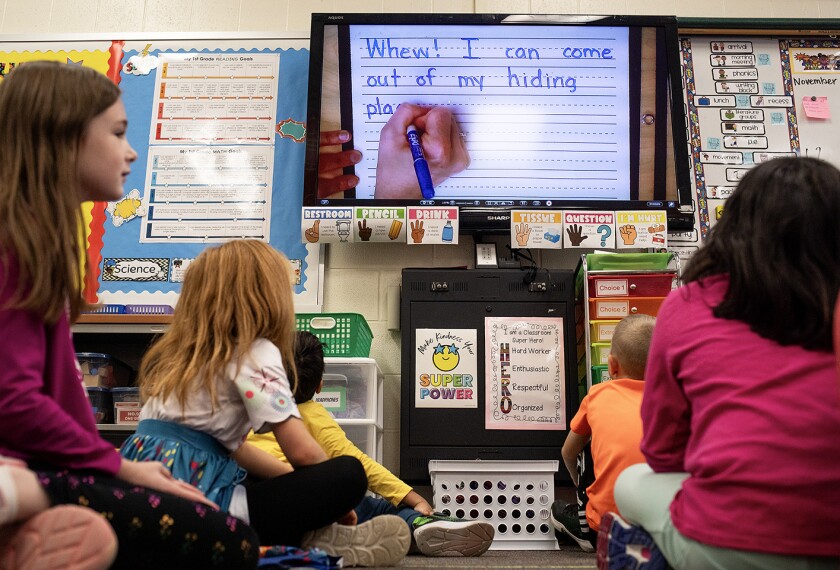As the coronavirus has infected millions of Americans, the news media have become saturated with numbers: new infection cases, hospitalization rates, death tolls, and vaccine trial results. Many Americans have been overwhelmed, and in part because too few of us are comfortable with data, we have been susceptible to a plague of misinformation.
Most Americans don’t have the skills and knowledge to work with data, despite their critical importance to understanding our world and making informed decisions. This data illiteracy must change, and our education system needs to prioritize data-science education for all students.
Technically speaking, data science is nothing new. Scientists, businesses, and governments have long collected and interpreted data and used it as a basis for decisionmaking. But two recent changes have made data science much more relevant to all of us. The first is an explosion in the availability of data, fed by smartphones and the internet. The second is a dramatic improvement in the quality of software tools for analyzing that data.
Despite being commonly misunderstood as a skill relevant only to technical roles, the rise of data science has had huge impacts in almost every field, from football to art history. This sea change presents many opportunities, and skills in analyzing and interpreting data can give young people access to new career opportunities. The employment-information website Glassdoor, for example, ranked “data scientist” as the second best job for 2021 based on openings, compensation, and job satisfaction. Even for those who don’t pursue data science as a career, many, many working adults—nurses, salespeople, journalists—need data skills.
More importantly, data use is a practical skill that makes education more relevant. When I wrote Freakonomics, I employed data to explore topics as diverse as sumo wrestling, real estate, and the drug trade. Similarly, educators can engage students by having them analyze data on topics that interest them like crime, the border crisis, global development, or climate change.
In many ways, this is a plea for educational pragmatism. Our world has been revolutionized by information technology, yet our K-12 curriculum is still trapped in the industrial age. Instead of teaching our young people obscure trigonometric techniques, let’s help them learn how to interpret the huge amounts of data being produced every day in our hyperconnected world.
Instead of teaching our young people obscure trigonometric techniques, let’s help them learn how to interpret the huge amounts of data being produced every day in our hyperconnected world.
So what needs to be done? Reforms should continue along a number of tracks. First, education policymakers at the state and district levels can modernize the curriculum in mathematics and other disciplines, especially in high schools, to stress data science and computational fluency; a dozen states are already starting that work. Second, universities need to change their admissions policies to accept data-science coursework as evidence of rigorous mathematics preparation. Third, federal and state policymakers should increase funding to equip educators with the tools and training necessary to teach this material effectively.
There are already signs of progress. Some organizations, like CourseKata and Bootstrap, are exposing students to powerful tools for data analysis and equipping them with the skills to do real analysis and report on their findings. CourseKata has developed a full data-science course curriculum, and Bootstrap offers flexible modules that can be incorporated across disciplines. The U.S. Department of Education’s Institute of Education Sciences is helping to spur change by including data-science efforts in its grantmaking.
But much more needs to be done, which is why my team at the University of Chicago’s Center for Radical Innovation for Social Change launched the Data Science for Everyone Coalition to mobilize and convene an active community, spark policy reform, and expand access to resources that will catalyze the expansion of data-science education in K-12 schools. In the next two years, the coalition expects to grow to 3,000 members, including teachers, parents, administrators, and policymakers.
At its heart, this is a grassroots campaign. That means engaging parents at the local level about the importance of learning data science—and connecting with educators in schools across the country, who need more support in teaching data science. So far, members of the coalition have posted some important victories.
Coalition members are already increasing access to high-quality data-science education. For instance, the San Diego school district has committed to rolling out data-science education across P-12 by 2023, which will impact 120,000 students across 168 schools. The District of Columbia school system is partnering with American University to offer teacher training at the undergraduate and graduate levels. The Stanford Graduate School of Education’s teacher education program (known as STEP) is launching a new preservice teacher education course on teaching high school data science that is responsive to multiple disciplines. And companies like DataCamp, which provides data-science instruction online, and Tableau, an analytics platform, are offering their software for free to teachers and students.
These organizations are bravely pioneering a new data-based math future, and we all need to fully commit the resources required to make it happen. Let’s build a math curriculum together that engages students more fully, prepares them for successful careers, and equips them to be good citizens.






